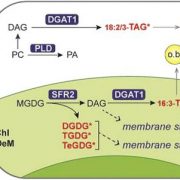
Baby, It’s Cold Inside: Maintaining Membrane Integrity during Freezing
Blog, Plant Physiology, Plant Physiology: News and ViewsWhen did you last stop to think about the amazing chemical properties of water? Water is one of the few substances that have a larger volume as a solid than a liquid due to the hexagonal arrangement of molecules that make up ice crystals. For plants, ice crystals forming in the extracellular space of…
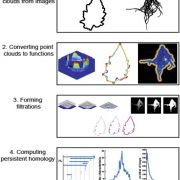
A Method to the Madness: Using Persistent Homology to Measure Plant Morphology
Blog, Plant Physiology, Plant Physiology: News and ViewsAs the study of plant variation and characterization moves from measurements of largely organismal-level polymorphisms to those of cellular- and molecular-level traits, the need for morphological measuring tools that incorporate complex trait information is clear. While quantitative methodologies have…

Revealing the Invisible: A Synthetic Reporter for ABA
Blog, Plant Physiology, Plant Physiology: News and ViewsHow do you make the invisible visible? It’s a question that crops up again and again in molecular biology. Abscisic acid (ABA) is one of the most important hormones in plants and is essential for survival in suboptimal conditions. Despite this, we have only a basic understanding of where and when this…

Cellulose Synthase Stoichiometry Varies among Species and Tissues
Blog, Plant Physiology, Plant Physiology: News and ViewsCellulose, the most abundant biopolymer on earth, is an important structural component of the primary and secondary cell wall of plant cells. It is also found in animals (tunicates), oomycetes, and bacteria (Kumar and Turner, 2015). Besides providing support and rigidity in living organisms, cellulose…
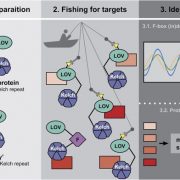
Save Time and Fish for the Clock
Blog, Plant Physiology, Plant Physiology: News and ViewsPlants live by the clock. It helps them to predict day and night as well as upcoming seasons, and to decide when it’s time for reproduction. These predictions depend on oscillating processes that involve gene transcription and protein stability, cycling in a period of, for example, 24 h. Environmental…
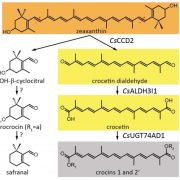
Subcellular Spice Trade Routes: Crocin Biosynthesis in the Saffron Crocus (Crocus sativus)
Blog, Plant Physiology, Plant Physiology: News and ViewsCommentary by Trevor H. Yeats and Raimund Nagel
Saffron is produced from the stigmas and styles of Crocus sativus flowers and is one of the most expensive spices. In C. sativus, both stigma and style are intensely crimson red in color due to the presence of three major classes of apocarotenoids: crocins,…
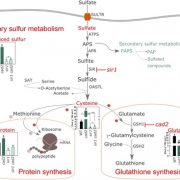
Managing Competing Interests: Partitioning S between Glutathione and Protein Synthesis
Blog, Plant Physiology, Plant Physiology: News and ViewsSulfur (S) is an essential element for cell function and responses to the environment. The primary S source is sulfate, which, following uptake by specific transporters, is reduced and incorporated into the amino acids Cysteine (Cys) and Methionine, and thereafter into proteins and peptides, including…
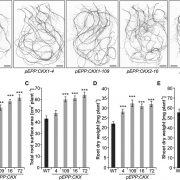
Releasing the Cytokinin Brakes on Root Growth
Blog, Plant Physiology, Plant Physiology: News and ViewsRoots explore the soil for available water and nutrients, with deep roots providing water from the lower soil layers (Uga et al., 2015) and highly branched roots searching the soil for less-mobile nutrients such as phosphate, zinc, and manganese. Root architecture results from plant developmental programs,…
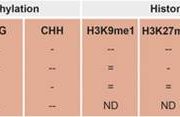
Powering Epigenetics through the 1C Pathway
Plant Physiology, Plant Physiology: News and ViewsBy Lisa Smith and Nathan Butler
Epigenetic modifications in plants repress transposable elements to maintain genome stability and facilitate adaptation to changing environmental conditions by regulating the expression of some genes. Furthermore, conditions such as disease stress can alter the epigenetic…

